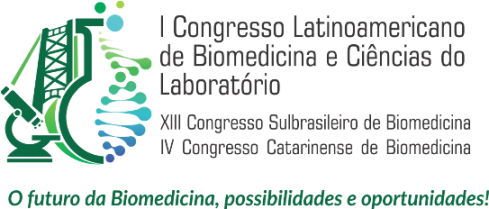Dados do Trabalho
Título
CHARACTERIZATION OF PHENOTYPIC ASPECTS OF HUMAN GLIOBLASTOMA CELLS CULTIVATED IN HANGING DROPS SUBMITTED TO THE COMBINED TREATMENT OF TEMOZOLOMIDE AND SINVASTATIN
Fundamentação/Introdução
Gliomas are the most common neoplasms that affect the central nervous system. Among them, grade IV astrocytomas, also called glioblastomas (GBMs), are the most aggressive. Although current therapies involve surgical removal, chemotherapy and radiotherapy, prognosis is still poor and survival rate ranges from 15 months. Temozolomide (TMZ) is the standard chemotherapy currently used, however, several mechanisms of resistance have been described. An example of this is the presence of tumor stem cells (CSCs) that are not affected by the administration of the chemotherapeutic agent. In this context, statins, cholesterol-lowering agents, have been associated with antiproliferative action in several neoplasias. Studies show that treatment of GBM with simvastatin (SVA) promotes an increase in apoptosis, modulation of senescence and autophagic capacity of tumor cells. The responsiveness of cells to antitumor agents is closely related to the tumor microenvironment, thereby in vitro assays that resemble this microenvironment are important. Among in vitro 3D-techniques, hanging drops cell culture is an easy and cost-effective method that has been used in to generate cell spheroids that mimic cell-cell and cell-microenvironment interactions.
Objetivos
This project aim is to study the potential cytotoxic action of the combined treatment of TMZ and SVA in GBM cell lines (U-251MG, U-87MG and T98G ) cultured in hanging drops.
Delineamento e Métodos
Tests were performed using different cell densities at different culture times, as well as phenotypic analysis of the neurospheres and evaluation of cytotoxicity during spheroid formation and after spheroid maintenance on a non - adherent substrate.
Resultados
The results showed that the formation of viable neurospheres with more homogeneous morphology resulted in the density of 1x10 3 cells, cultured for 72 hours in suspended drop followed by 5 days in culture in non-adherent medium (1.2% poly-HEMA). We observed increased presence of CSC by labeling with CD133. In addition, treatment with TMZ and SVA during and after maintenance spheroid formation demonstrated a change in the size and border irregularities of the neurospheres formed, respectively. Finally, maintence spheroid showed rate cell death (labbeling which PI).
Conclusões/Considerações Finais
Thus, from the data of this project, we seek to obtain a differential methodology of in vitro studies that present low cost, as well as to suggest a new possibility of study of adjuvant therapy for GBM treatment.
Palavras-chave
Glioblastoma, hanging drops, temozolomide, simvastatin.
Área
Tema livre
Instituições
Universidade Federal do Paraná - Paraná - Brasil, University of Queensland - - Australia
Autores
Juliana Mueller Bark, Lisley Janowski Spisila, Sheila Maria Brochado Winnischofer
